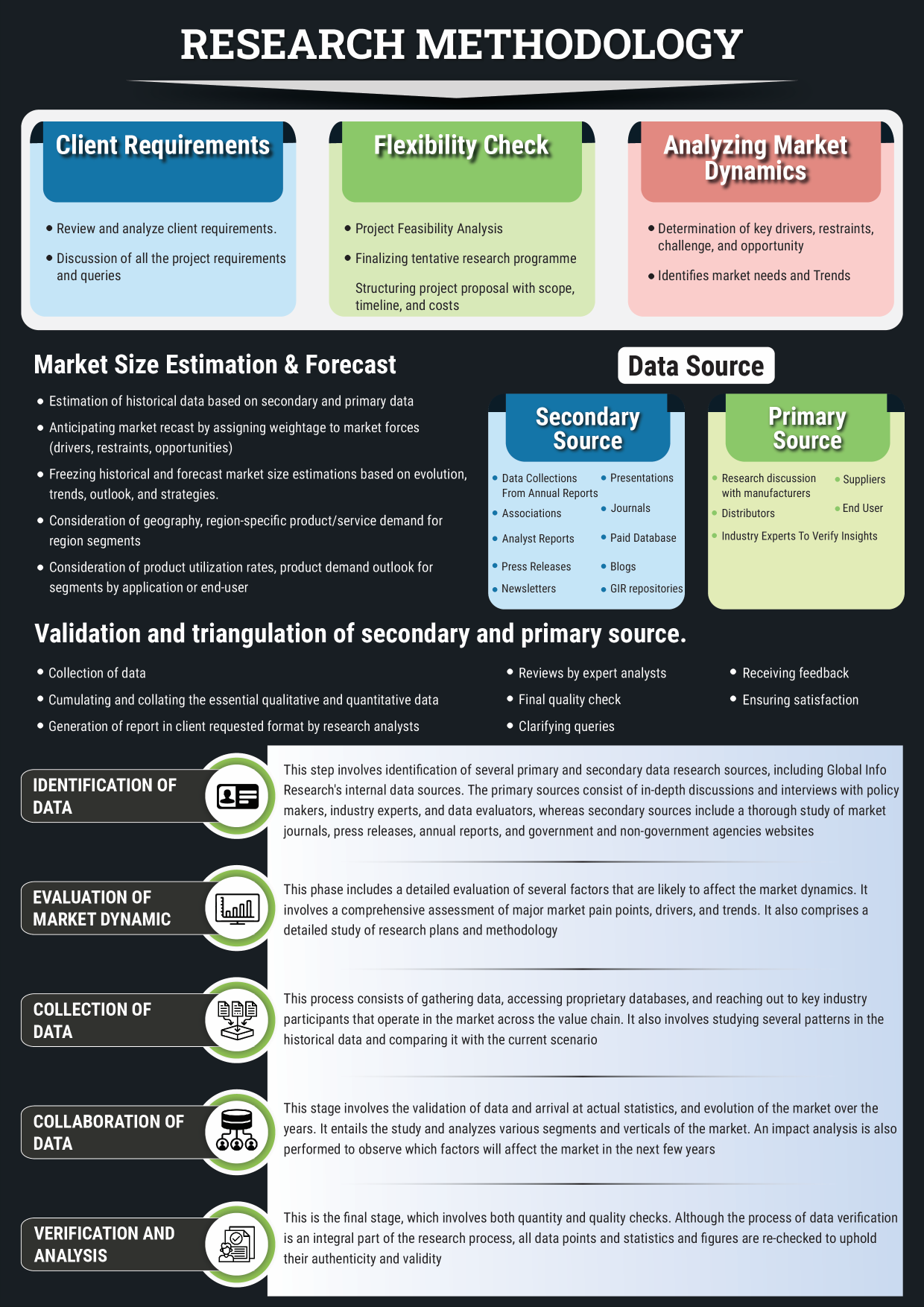Gastrointestinal Market 2025: Growth Drivers, Innovations, and Regional Trends
The gastrointestinal (GI) market plays a pivotal role in global healthcare, addressing a wide range of digestive system disorders affecting millions worldwide. From acid reflux and irritable bowel syndrome to inflammatory bowel diseases and GI cancers, the demand for effective diagnosis and treatment solutions is growing rapidly. As we approach 2025, the gastrointestinal market is set to witness substantial growth fueled by rising disease prevalence, technological advancements, and evolving healthcare infrastructure worldwide.
Key Market Drivers Boosting Growth
Several critical factors are driving the growth of the gastrointestinal market:
- Increasing Prevalence of GI Disorders: Modern lifestyle changes, unhealthy diets, stress, and aging populations have led to a surge in gastrointestinal diseases globally.
- Advancements in Diagnostics: Innovative diagnostic tools enable early detection and accurate diagnosis, expanding patient identification and treatment initiation.
- Rise of Personalized Medicine: Focus on individualized treatment regimens enhances therapeutic efficacy and patient outcomes.
- Growing Demand for Minimally Invasive Treatments: Patients prefer less invasive procedures that offer quicker recovery and fewer complications.
- Expanding Healthcare Access in Emerging Markets: Investments in healthcare infrastructure and rising awareness drive demand in Asia-Pacific, Latin America, and other regions.
Innovation Transforming the Gastrointestinal Market
Innovation is at the core of the gastrointestinal market's evolution, spanning diagnostics, therapeutics, and patient management.
- Cutting-Edge Diagnostic Technologies: Capsule endoscopy, advanced imaging, molecular biomarker testing, and AI-based tools are making diagnosis less invasive and more precise.
- Targeted Therapies and Biologics: New drug classes targeting specific pathways in diseases such as Crohn’s and ulcerative colitis improve efficacy and reduce side effects.
- Digital Health Integration: Mobile health applications, telemedicine, and remote monitoring are enhancing patient adherence and real-time care.
- Minimally Invasive Surgical Techniques: Robotic-assisted surgeries and endoscopic procedures reduce hospitalization times and improve treatment accuracy.
These innovations not only improve clinical outcomes but also contribute to a more patient-centric healthcare experience.
Regional Market Dynamics
The gastrointestinal market exhibits diverse growth trajectories and characteristics across various regions:
- North America
North America leads with robust healthcare infrastructure, high R&D spending, and quick adoption of new technologies. Stringent regulatory frameworks ensure safety and efficacy, supporting the growth of novel GI therapies. - Europe
Europe maintains steady growth with an emphasis on cost-effective care and sustainability. Strong pharmaceutical hubs and collaborative research initiatives continue to drive market advancements. - Asia-Pacific
Asia-Pacific is the fastest-growing region, driven by expanding healthcare access, increasing disease awareness, and government investments. Countries like China, India, and Japan are significant contributors, though regulatory challenges remain. - Latin America, Middle East & Africa
Emerging regions are witnessing gradual improvements in healthcare infrastructure and growing patient pools. Market players must navigate regulatory complexities and affordability issues to capitalize on these opportunities.
Strategic Considerations for Market Players
To succeed in the competitive gastrointestinal market, companies should focus on the following strategic areas:
- Invest in Research & Development: Continuous innovation in drug development and diagnostic tools is essential to meet unmet medical needs.
- Expand Presence in Emerging Markets: Tailored strategies addressing local regulations and healthcare dynamics can unlock growth potential.
- Leverage Digital Technologies: Incorporating telehealth and patient engagement platforms enhances treatment adherence and outcomes.
- Forge Strategic Partnerships: Collaborations with healthcare providers, technology firms, and research institutions accelerate innovation and market penetration.
- Prioritize Regulatory Compliance: Navigating diverse regulatory landscapes efficiently ensures smoother product approvals and market access.
- Emphasize Patient-Centric Care: Understanding patient needs and focusing on quality of life helps differentiate offerings in a crowded market.
Conclusion: A Promising Outlook for the Gastrointestinal Market
The gastrointestinal market is set for robust expansion by 2025, driven by rising disease burden, technological innovation, and shifting healthcare models. Companies that focus on innovation, adapt regionally, and prioritize patient-centric solutions will be best positioned to capitalize on emerging opportunities.
The integration of advanced diagnostics, targeted therapies, and digital health tools promises to enhance patient outcomes and transform gastrointestinal care globally. As this dynamic market continues to evolve, strategic foresight and agility will be critical for sustained success.
NOTE:
Quants and Trends is proud to offer an extensive portfolio of meticulously researched healthcare market reports, numbering in the thousands. We also provide tailored customization services to ensure our insights align precisely with your strategic objectives and informational needs. For personalized assistance or to discuss your specific requirements, we invite you to get in touch with our team. We also encourage you to request a complimentary sample PDF report. Please visit our Sample Request Page to receive yours today.
Key Market Players
AstraZenec
Sanofi
Bayer
Pfizer
GlaxoSmithKline
Teva
Zeria(Tillotts)
Perrigo
Boehringer Ingelheim
Purdue Pharma
C.B. Fleet
Abbott
Jiangzhong
Xian-Janssen
Segmentation By Type
Prescription Gastrointestinal Drug
OTC Gastrointestinal Drug
Segmentation By Application
Chronic Gastritis
Functional Dyspepsia
Peptic Ulcer
Acute Gastroenteritis
Others
Segmentation By Region
North America (United States, Canada, and Mexico)
Europe (Germany, France, UK, Russia, Italy, and Rest of Europe)
Asia-Pacific (China, Japan, South Korea, India, Southeast Asia, Australia and Rest of Asia-Pacific)
South America (Brazil, Argentina and Rest of South America)
Middle East & Africa (Turkey, Saudi Arabia, UAE, Rest of Middle East & Africa)
Market SWOT Analysis
What are the strengths of the gastrointestinal market in 2025?
The gastrointestinal market in 2025 benefits from significant advancements in diagnostic technologies, minimally invasive treatments, and personalized medicine. Increased awareness and early detection of GI disorders will likely drive demand for more specialized treatments, including biologics and immunotherapies.
What are the weaknesses of the gastrointestinal market in 2025?
The gastrointestinal market faces challenges such as high treatment costs, limited access to cutting-edge therapies in developing countries, and complex regulatory hurdles for new drugs and devices. Additionally, patient compliance can sometimes be an issue due to long-term treatment requirements.
What opportunities exist in the gastrointestinal market in 2025?
Opportunities include the growing prevalence of gastrointestinal diseases, particularly in aging populations. There is also potential for innovation in digital health technologies, such as AI-based diagnostics and telemedicine, which could enhance accessibility and patient outcomes. Emerging markets are poised for significant growth in GI care as healthcare infrastructure improves.
What threats might impact the gastrointestinal market in 2025?
Potential threats include rising competition among pharmaceutical companies leading to price wars, regulatory changes that could delay the approval of new treatments, and the increasing prevalence of antimicrobial resistance, which may complicate treatment for certain GI conditions. Economic downturns could also reduce patient spending on non-essential or elective GI procedures.
Market PESTEL Analysis
What are the political factors influencing the gastrointestinal market in 2025?
Political stability and government policies related to healthcare regulations, reimbursement frameworks, and pharmaceutical approvals will significantly impact the gastrointestinal market. Additionally, trade agreements and tariffs may affect the availability and pricing of medical devices and pharmaceuticals.
How do economic conditions affect the gastrointestinal market in 2025?
Economic factors such as GDP growth, healthcare expenditure, and insurance coverage will influence the gastrointestinal market. In times of economic growth, patients are more likely to seek elective procedures, while economic downturns may lead to reduced spending on healthcare.
What social trends are shaping the gastrointestinal market in 2025?
Increasing awareness of gastrointestinal health, coupled with a rise in lifestyle-related disorders, will drive demand for gastrointestinal treatments. Moreover, an aging population and changing dietary habits will further influence market dynamics as more individuals seek preventive care and management options.
What technological advancements are impacting the gastrointestinal market in 2025?
Innovations in minimally invasive surgical techniques, diagnostic imaging, and telemedicine are transforming the gastrointestinal market. These advancements improve patient outcomes, enhance efficiency, and reduce recovery times, making healthcare more accessible.
What environmental factors are relevant to the gastrointestinal market in 2025?
Growing concerns about sustainability and environmental impact are prompting the gastrointestinal market to adopt greener practices. This includes eco-friendly packaging for medications and medical devices, as well as sustainable manufacturing processes to minimize waste.
How do legal factors play a role in the gastrointestinal market in 2025?
Legal regulations regarding product safety, clinical trials, and intellectual property rights will shape the gastrointestinal market. Compliance with these regulations is crucial for manufacturers and healthcare providers to ensure patient safety and maintain market access.
Market SIPOC Analysis
Who are the key suppliers in the gastrointestinal market in 2025?
Pharmaceutical companies, medical device manufacturers, biotechnology firms, and raw material suppliers play a crucial role in providing essential drugs, diagnostic tools, and treatment devices for gastrointestinal disorders.
What are the main inputs in the gastrointestinal market in 2025?
Inputs include active pharmaceutical ingredients (APIs), medical devices, diagnostic equipment, research data, and healthcare professionals’ expertise. Regulatory approvals and clinical trial results also serve as key inputs for market growth.
What are the critical processes involved in the gastrointestinal market in 2025?
Processes include drug development, clinical trials, regulatory approvals, manufacturing, distribution, and patient care. Advancements in technology also play a role in streamlining diagnostics and treatment approaches.
What are the primary outputs of the gastrointestinal market in 2025?
Outputs include innovative medications, minimally invasive procedures, advanced endoscopic techniques, telemedicine solutions, and improved diagnostic tools that enhance patient outcomes and quality of life.
Who are the key customers in the gastrointestinal market in 2025?
Patients suffering from gastrointestinal disorders, hospitals, clinics, pharmacies, and research institutions are the primary customers. Additionally, government healthcare programs and insurance providers influence market demand and accessibility.
Market Porter's Five Forces
How intense is the competitive rivalry in the gastrointestinal market in 2025?
The gastrointestinal market is highly competitive, with numerous pharmaceutical companies, medical device manufacturers, and biotech firms striving for market share. Innovation, regulatory compliance, and pricing strategies play a crucial role in maintaining a competitive edge.
What is the threat of new entrants in the gastrointestinal market in 2025?
The high cost of research and development, stringent regulatory requirements, and established brand dominance create significant barriers for new entrants. However, advancements in biotechnology and personalized medicine may open new opportunities for startups.
How strong is the bargaining power of suppliers in the gastrointestinal market in 2025?
Suppliers, including pharmaceutical ingredient manufacturers and medical device producers, hold moderate power due to the specialized nature of their products. However, increasing demand for cost-effective solutions puts pressure on suppliers to maintain competitive pricing.
What is the bargaining power of buyers in the gastrointestinal market in 2025?
Hospitals, clinics, and insurance providers exert considerable influence over pricing and treatment choices. With greater access to information and alternative treatment options, patients are becoming more active decision-makers, driving demand for affordability and effectiveness.
How significant is the threat of substitutes in the gastrointestinal market in 2025?
The threat of substitutes is moderate, with alternative treatments such as probiotics, lifestyle modifications, and herbal medicine gaining popularity. However, pharmaceuticals and medical procedures remain essential for managing severe gastrointestinal conditions.
Market Upstream Analysis
What are the key upstream components in the gastrointestinal market in 2025?
Key upstream components include raw materials for pharmaceuticals, medical device components, biotechnology inputs, and research data. These elements form the foundation for developing drugs, diagnostic tools, and treatment solutions.
Who are the main suppliers in the upstream segment of the gastrointestinal market in 2025?
Suppliers include pharmaceutical ingredient manufacturers, biotechnology firms, medical device producers, and research institutions. They provide essential inputs such as active pharmaceutical ingredients (APIs), polymers for medical devices, and genetic research data.
How do regulatory policies impact the upstream segment of the gastrointestinal market in 2025?
Strict regulatory policies govern raw material sourcing, drug formulation, and medical device manufacturing. Compliance with quality standards, clinical trial regulations, and intellectual property laws is crucial for maintaining supply chain integrity.
What challenges affect the upstream supply chain in the gastrointestinal market in 2025?
Supply chain disruptions, high production costs, geopolitical instability, and fluctuating raw material prices pose challenges. Additionally, stringent quality control measures increase operational complexities for suppliers.
How does innovation influence the upstream segment of the gastrointestinal market in 2025?
Advancements in biotechnology, synthetic biology, and sustainable material sourcing enhance the efficiency and quality of upstream processes. Automation and AI-driven research also accelerate drug discovery and medical device development.
Market Midstream Analysis
What are the key midstream activities in the gastrointestinal market in 2025?
Midstream activities include drug manufacturing, medical device production, clinical trials, regulatory approvals, and quality control. These processes ensure that gastrointestinal treatments meet safety and efficacy standards before reaching the market.
Who are the major players in the midstream segment of the gastrointestinal market in 2025?
Pharmaceutical companies, biotech firms, contract manufacturing organizations (CMOs), and medical device manufacturers dominate the midstream segment. Their role is critical in transforming raw materials into market-ready therapies and technologies.
How do regulatory agencies influence midstream operations in the gastrointestinal market in 2025?
Regulatory bodies such as the FDA, EMA, and other national health authorities oversee drug approvals, clinical trial protocols, and manufacturing practices. Compliance with these regulations ensures product safety, market access, and consumer trust.
What challenges impact the midstream segment of the gastrointestinal market in 2025?
Challenges include high production costs, supply chain constraints, complex regulatory requirements, and the need for continuous innovation. Additionally, delays in clinical trials and approvals can slow down market entry for new treatments.
How does technology drive efficiency in the midstream segment of the gastrointestinal market in 2025?
Automation, AI-driven drug discovery, precision medicine, and advanced manufacturing techniques improve efficiency and reduce costs. Innovations in digital health and real-world evidence collection also enhance clinical trial accuracy and speed.
Market Downstream Analysis
Who are the key downstream players in the gastrointestinal market in 2025?
Hospitals, clinics, pharmacies, healthcare providers, and patients are the primary downstream players. Insurance companies and government healthcare programs also play a significant role in reimbursement and accessibility.
How are gastrointestinal products and services delivered to end-users in 2025?
Products reach end-users through hospitals, retail and online pharmacies, specialized gastrointestinal clinics, and telemedicine platforms. Advancements in digital health enable faster diagnosis and remote treatment options.
What factors influence demand in the downstream segment of the gastrointestinal market in 2025?
Rising gastrointestinal disorders, an aging population, increased awareness of gut health, and growing adoption of minimally invasive procedures drive demand. Patient preferences for personalized medicine and cost-effective treatments also shape market trends.
What challenges affect the downstream segment of the gastrointestinal market in 2025?
High treatment costs, insurance coverage limitations, disparities in healthcare access, and regulatory restrictions impact market penetration. Additionally, patient adherence to prescribed treatments remains a critical challenge.
How is technology improving downstream healthcare delivery in the gastrointestinal market in 2025?
AI-powered diagnostics, digital therapeutics, remote patient monitoring, and precision medicine enhance treatment outcomes. Improved electronic health records (EHRs) and data analytics streamline patient management and decision-making.
Chapter 1, to describe Gastrointestinal product scope, market overview, market estimation caveats and base year.
Chapter 2, to profile the top players of Gastrointestinal, with revenue, gross margin and global market share of Gastrointestinal from 2018 to 2023.
Chapter 3, the Gastrointestinal competitive situation, revenue and global market share of top players are analyzed emphatically by landscape contrast.
Chapter 4 and 5, to segment the market size by Type and application, with consumption value and growth rate by Type, application, from 2018 to 2029.
Chapter 6, 7, 8, 9, and 10, to break the market size data at the country level, with revenue and market share for key countries in the world, from 2018 to 2023.and Gastrointestinal market forecast, by regions, type and application, with consumption value, from 2024 to 2029.
Chapter 11, market dynamics, drivers, restraints, trends, Porters Five Forces analysis, and Influence of COVID-19 and Russia-Ukraine War
Chapter 12, the key raw materials and key suppliers, and industry chain of Gastrointestinal.
Chapter 13, to describe Gastrointestinal research findings and conclusion.
1 Market Overview
1.1 Product Overview and Scope of Gastrointestinal
1.2 Market Estimation Caveats and Base Year
1.3 Classification of Gastrointestinal by Type
1.3.1 Overview: Global Gastrointestinal Market Size by Type: 2018 Versus 2022 Versus 2029
1.3.2 Global Gastrointestinal Consumption Value Market Share by Type in 2022
1.3.3 Prescription Gastrointestinal Drug
1.3.4 OTC Gastrointestinal Drug
1.4 Global Gastrointestinal Market by Application
1.4.1 Overview: Global Gastrointestinal Market Size by Application: 2018 Versus 2022 Versus 2029
1.4.2 Chronic Gastritis
1.4.3 Functional Dyspepsia
1.4.4 Peptic Ulcer
1.4.5 Acute Gastroenteritis
1.4.6 Others
1.5 Global Gastrointestinal Market Size & Forecast
1.6 Global Gastrointestinal Market Size and Forecast by Region
1.6.1 Global Gastrointestinal Market Size by Region: 2018 VS 2022 VS 2029
1.6.2 Global Gastrointestinal Market Size by Region, (2018-2029)
1.6.3 North America Gastrointestinal Market Size and Prospect (2018-2029)
1.6.4 Europe Gastrointestinal Market Size and Prospect (2018-2029)
1.6.5 Asia-Pacific Gastrointestinal Market Size and Prospect (2018-2029)
1.6.6 South America Gastrointestinal Market Size and Prospect (2018-2029)
1.6.7 Middle East and Africa Gastrointestinal Market Size and Prospect (2018-2029)
2 Company Profiles
2.1 AstraZenec
2.1.1 AstraZenec Details
2.1.2 AstraZenec Major Business
2.1.3 AstraZenec Gastrointestinal Product and Solutions
2.1.4 AstraZenec Gastrointestinal Revenue, Gross Margin and Market Share (2018-2023)
2.1.5 AstraZenec Recent Developments and Future Plans
2.2 Sanofi
2.2.1 Sanofi Details
2.2.2 Sanofi Major Business
2.2.3 Sanofi Gastrointestinal Product and Solutions
2.2.4 Sanofi Gastrointestinal Revenue, Gross Margin and Market Share (2018-2023)
2.2.5 Sanofi Recent Developments and Future Plans
2.3 Bayer
2.3.1 Bayer Details
2.3.2 Bayer Major Business
2.3.3 Bayer Gastrointestinal Product and Solutions
2.3.4 Bayer Gastrointestinal Revenue, Gross Margin and Market Share (2018-2023)
2.3.5 Bayer Recent Developments and Future Plans
2.4 Pfizer
2.4.1 Pfizer Details
2.4.2 Pfizer Major Business
2.4.3 Pfizer Gastrointestinal Product and Solutions
2.4.4 Pfizer Gastrointestinal Revenue, Gross Margin and Market Share (2018-2023)
2.4.5 Pfizer Recent Developments and Future Plans
2.5 GlaxoSmithKline
2.5.1 GlaxoSmithKline Details
2.5.2 GlaxoSmithKline Major Business
2.5.3 GlaxoSmithKline Gastrointestinal Product and Solutions
2.5.4 GlaxoSmithKline Gastrointestinal Revenue, Gross Margin and Market Share (2018-2023)
2.5.5 GlaxoSmithKline Recent Developments and Future Plans
2.6 Teva
2.6.1 Teva Details
2.6.2 Teva Major Business
2.6.3 Teva Gastrointestinal Product and Solutions
2.6.4 Teva Gastrointestinal Revenue, Gross Margin and Market Share (2018-2023)
2.6.5 Teva Recent Developments and Future Plans
2.7 Zeria(Tillotts)
2.7.1 Zeria(Tillotts) Details
2.7.2 Zeria(Tillotts) Major Business
2.7.3 Zeria(Tillotts) Gastrointestinal Product and Solutions
2.7.4 Zeria(Tillotts) Gastrointestinal Revenue, Gross Margin and Market Share (2018-2023)
2.7.5 Zeria(Tillotts) Recent Developments and Future Plans
2.8 Perrigo
2.8.1 Perrigo Details
2.8.2 Perrigo Major Business
2.8.3 Perrigo Gastrointestinal Product and Solutions
2.8.4 Perrigo Gastrointestinal Revenue, Gross Margin and Market Share (2018-2023)
2.8.5 Perrigo Recent Developments and Future Plans
2.9 Boehringer Ingelheim
2.9.1 Boehringer Ingelheim Details
2.9.2 Boehringer Ingelheim Major Business
2.9.3 Boehringer Ingelheim Gastrointestinal Product and Solutions
2.9.4 Boehringer Ingelheim Gastrointestinal Revenue, Gross Margin and Market Share (2018-2023)
2.9.5 Boehringer Ingelheim Recent Developments and Future Plans
2.10 Purdue Pharma
2.10.1 Purdue Pharma Details
2.10.2 Purdue Pharma Major Business
2.10.3 Purdue Pharma Gastrointestinal Product and Solutions
2.10.4 Purdue Pharma Gastrointestinal Revenue, Gross Margin and Market Share (2018-2023)
2.10.5 Purdue Pharma Recent Developments and Future Plans
2.11 C.B. Fleet
2.11.1 C.B. Fleet Details
2.11.2 C.B. Fleet Major Business
2.11.3 C.B. Fleet Gastrointestinal Product and Solutions
2.11.4 C.B. Fleet Gastrointestinal Revenue, Gross Margin and Market Share (2018-2023)
2.11.5 C.B. Fleet Recent Developments and Future Plans
2.12 Abbott
2.12.1 Abbott Details
2.12.2 Abbott Major Business
2.12.3 Abbott Gastrointestinal Product and Solutions
2.12.4 Abbott Gastrointestinal Revenue, Gross Margin and Market Share (2018-2023)
2.12.5 Abbott Recent Developments and Future Plans
2.13 Jiangzhong
2.13.1 Jiangzhong Details
2.13.2 Jiangzhong Major Business
2.13.3 Jiangzhong Gastrointestinal Product and Solutions
2.13.4 Jiangzhong Gastrointestinal Revenue, Gross Margin and Market Share (2018-2023)
2.13.5 Jiangzhong Recent Developments and Future Plans
2.14 Xian-Janssen
2.14.1 Xian-Janssen Details
2.14.2 Xian-Janssen Major Business
2.14.3 Xian-Janssen Gastrointestinal Product and Solutions
2.14.4 Xian-Janssen Gastrointestinal Revenue, Gross Margin and Market Share (2018-2023)
2.14.5 Xian-Janssen Recent Developments and Future Plans
3 Market Competition, by Players
3.1 Global Gastrointestinal Revenue and Share by Players (2018-2023)
3.2 Market Share Analysis (2022)
3.2.1 Market Share of Gastrointestinal by Company Revenue
3.2.2 Top 3 Gastrointestinal Players Market Share in 2022
3.2.3 Top 6 Gastrointestinal Players Market Share in 2022
3.3 Gastrointestinal Market: Overall Company Footprint Analysis
3.3.1 Gastrointestinal Market: Region Footprint
3.3.2 Gastrointestinal Market: Company Product Type Footprint
3.3.3 Gastrointestinal Market: Company Product Application Footprint
3.4 New Market Entrants and Barriers to Market Entry
3.5 Mergers, Acquisition, Agreements, and Collaborations
4 Market Size Segment by Type
4.1 Global Gastrointestinal Consumption Value and Market Share by Type (2018-2023)
4.2 Global Gastrointestinal Market Forecast by Type (2024-2029)
5 Market Size Segment by Application
5.1 Global Gastrointestinal Consumption Value Market Share by Application (2018-2023)
5.2 Global Gastrointestinal Market Forecast by Application (2024-2029)
6 North America
6.1 North America Gastrointestinal Consumption Value by Type (2018-2029)
6.2 North America Gastrointestinal Consumption Value by Application (2018-2029)
6.3 North America Gastrointestinal Market Size by Country
6.3.1 North America Gastrointestinal Consumption Value by Country (2018-2029)
6.3.2 United States Gastrointestinal Market Size and Forecast (2018-2029)
6.3.3 Canada Gastrointestinal Market Size and Forecast (2018-2029)
6.3.4 Mexico Gastrointestinal Market Size and Forecast (2018-2029)
7 Europe
7.1 Europe Gastrointestinal Consumption Value by Type (2018-2029)
7.2 Europe Gastrointestinal Consumption Value by Application (2018-2029)
7.3 Europe Gastrointestinal Market Size by Country
7.3.1 Europe Gastrointestinal Consumption Value by Country (2018-2029)
7.3.2 Germany Gastrointestinal Market Size and Forecast (2018-2029)
7.3.3 France Gastrointestinal Market Size and Forecast (2018-2029)
7.3.4 United Kingdom Gastrointestinal Market Size and Forecast (2018-2029)
7.3.5 Russia Gastrointestinal Market Size and Forecast (2018-2029)
7.3.6 Italy Gastrointestinal Market Size and Forecast (2018-2029)
8 Asia-Pacific
8.1 Asia-Pacific Gastrointestinal Consumption Value by Type (2018-2029)
8.2 Asia-Pacific Gastrointestinal Consumption Value by Application (2018-2029)
8.3 Asia-Pacific Gastrointestinal Market Size by Region
8.3.1 Asia-Pacific Gastrointestinal Consumption Value by Region (2018-2029)
8.3.2 China Gastrointestinal Market Size and Forecast (2018-2029)
8.3.3 Japan Gastrointestinal Market Size and Forecast (2018-2029)
8.3.4 South Korea Gastrointestinal Market Size and Forecast (2018-2029)
8.3.5 India Gastrointestinal Market Size and Forecast (2018-2029)
8.3.6 Southeast Asia Gastrointestinal Market Size and Forecast (2018-2029)
8.3.7 Australia Gastrointestinal Market Size and Forecast (2018-2029)
9 South America
9.1 South America Gastrointestinal Consumption Value by Type (2018-2029)
9.2 South America Gastrointestinal Consumption Value by Application (2018-2029)
9.3 South America Gastrointestinal Market Size by Country
9.3.1 South America Gastrointestinal Consumption Value by Country (2018-2029)
9.3.2 Brazil Gastrointestinal Market Size and Forecast (2018-2029)
9.3.3 Argentina Gastrointestinal Market Size and Forecast (2018-2029)
10 Middle East & Africa
10.1 Middle East & Africa Gastrointestinal Consumption Value by Type (2018-2029)
10.2 Middle East & Africa Gastrointestinal Consumption Value by Application (2018-2029)
10.3 Middle East & Africa Gastrointestinal Market Size by Country
10.3.1 Middle East & Africa Gastrointestinal Consumption Value by Country (2018-2029)
10.3.2 Turkey Gastrointestinal Market Size and Forecast (2018-2029)
10.3.3 Saudi Arabia Gastrointestinal Market Size and Forecast (2018-2029)
10.3.4 UAE Gastrointestinal Market Size and Forecast (2018-2029)
11 Market Dynamics
11.1 Gastrointestinal Market Drivers
11.2 Gastrointestinal Market Restraints
11.3 Gastrointestinal Trends Analysis
11.4 Porters Five Forces Analysis
11.4.1 Threat of New Entrants
11.4.2 Bargaining Power of Suppliers
11.4.3 Bargaining Power of Buyers
11.4.4 Threat of Substitutes
11.4.5 Competitive Rivalry
11.5 Influence of COVID-19 and Russia-Ukraine War
11.5.1 Influence of COVID-19
11.5.2 Influence of Russia-Ukraine War
12 Industry Chain Analysis
12.1 Gastrointestinal Industry Chain
12.2 Gastrointestinal Upstream Analysis
12.3 Gastrointestinal Midstream Analysis
12.4 Gastrointestinal Downstream Analysis
13 Research Findings and Conclusion
14 Appendix
14.1 Methodology
14.2 Research Process and Data Source
14.3 Disclaimer
List of Tables
Table 1. Global Gastrointestinal Consumption Value by Type, (USD Million), 2018 & 2022 & 2029
Table 2. Global Gastrointestinal Consumption Value by Application, (USD Million), 2018 & 2022 & 2029
Table 3. Global Gastrointestinal Consumption Value by Region (2018-2023) & (USD Million)
Table 4. Global Gastrointestinal Consumption Value by Region (2024-2029) & (USD Million)
Table 5. AstraZenec Company Information, Head Office, and Major Competitors
Table 6. AstraZenec Major Business
Table 7. AstraZenec Gastrointestinal Product and Solutions
Table 8. AstraZenec Gastrointestinal Revenue (USD Million), Gross Margin and Market Share (2018-2023)
Table 9. AstraZenec Recent Developments and Future Plans
Table 10. Sanofi Company Information, Head Office, and Major Competitors
Table 11. Sanofi Major Business
Table 12. Sanofi Gastrointestinal Product and Solutions
Table 13. Sanofi Gastrointestinal Revenue (USD Million), Gross Margin and Market Share (2018-2023)
Table 14. Sanofi Recent Developments and Future Plans
Table 15. Bayer Company Information, Head Office, and Major Competitors
Table 16. Bayer Major Business
Table 17. Bayer Gastrointestinal Product and Solutions
Table 18. Bayer Gastrointestinal Revenue (USD Million), Gross Margin and Market Share (2018-2023)
Table 19. Bayer Recent Developments and Future Plans
Table 20. Pfizer Company Information, Head Office, and Major Competitors
Table 21. Pfizer Major Business
Table 22. Pfizer Gastrointestinal Product and Solutions
Table 23. Pfizer Gastrointestinal Revenue (USD Million), Gross Margin and Market Share (2018-2023)
Table 24. Pfizer Recent Developments and Future Plans
Table 25. GlaxoSmithKline Company Information, Head Office, and Major Competitors
Table 26. GlaxoSmithKline Major Business
Table 27. GlaxoSmithKline Gastrointestinal Product and Solutions
Table 28. GlaxoSmithKline Gastrointestinal Revenue (USD Million), Gross Margin and Market Share (2018-2023)
Table 29. GlaxoSmithKline Recent Developments and Future Plans
Table 30. Teva Company Information, Head Office, and Major Competitors
Table 31. Teva Major Business
Table 32. Teva Gastrointestinal Product and Solutions
Table 33. Teva Gastrointestinal Revenue (USD Million), Gross Margin and Market Share (2018-2023)
Table 34. Teva Recent Developments and Future Plans
Table 35. Zeria(Tillotts) Company Information, Head Office, and Major Competitors
Table 36. Zeria(Tillotts) Major Business
Table 37. Zeria(Tillotts) Gastrointestinal Product and Solutions
Table 38. Zeria(Tillotts) Gastrointestinal Revenue (USD Million), Gross Margin and Market Share (2018-2023)
Table 39. Zeria(Tillotts) Recent Developments and Future Plans
Table 40. Perrigo Company Information, Head Office, and Major Competitors
Table 41. Perrigo Major Business
Table 42. Perrigo Gastrointestinal Product and Solutions
Table 43. Perrigo Gastrointestinal Revenue (USD Million), Gross Margin and Market Share (2018-2023)
Table 44. Perrigo Recent Developments and Future Plans
Table 45. Boehringer Ingelheim Company Information, Head Office, and Major Competitors
Table 46. Boehringer Ingelheim Major Business
Table 47. Boehringer Ingelheim Gastrointestinal Product and Solutions
Table 48. Boehringer Ingelheim Gastrointestinal Revenue (USD Million), Gross Margin and Market Share (2018-2023)
Table 49. Boehringer Ingelheim Recent Developments and Future Plans
Table 50. Purdue Pharma Company Information, Head Office, and Major Competitors
Table 51. Purdue Pharma Major Business
Table 52. Purdue Pharma Gastrointestinal Product and Solutions
Table 53. Purdue Pharma Gastrointestinal Revenue (USD Million), Gross Margin and Market Share (2018-2023)
Table 54. Purdue Pharma Recent Developments and Future Plans
Table 55. C.B. Fleet Company Information, Head Office, and Major Competitors
Table 56. C.B. Fleet Major Business
Table 57. C.B. Fleet Gastrointestinal Product and Solutions
Table 58. C.B. Fleet Gastrointestinal Revenue (USD Million), Gross Margin and Market Share (2018-2023)
Table 59. C.B. Fleet Recent Developments and Future Plans
Table 60. Abbott Company Information, Head Office, and Major Competitors
Table 61. Abbott Major Business
Table 62. Abbott Gastrointestinal Product and Solutions
Table 63. Abbott Gastrointestinal Revenue (USD Million), Gross Margin and Market Share (2018-2023)
Table 64. Abbott Recent Developments and Future Plans
Table 65. Jiangzhong Company Information, Head Office, and Major Competitors
Table 66. Jiangzhong Major Business
Table 67. Jiangzhong Gastrointestinal Product and Solutions
Table 68. Jiangzhong Gastrointestinal Revenue (USD Million), Gross Margin and Market Share (2018-2023)
Table 69. Jiangzhong Recent Developments and Future Plans
Table 70. Xian-Janssen Company Information, Head Office, and Major Competitors
Table 71. Xian-Janssen Major Business
Table 72. Xian-Janssen Gastrointestinal Product and Solutions
Table 73. Xian-Janssen Gastrointestinal Revenue (USD Million), Gross Margin and Market Share (2018-2023)
Table 74. Xian-Janssen Recent Developments and Future Plans
Table 75. Global Gastrointestinal Revenue (USD Million) by Players (2018-2023)
Table 76. Global Gastrointestinal Revenue Share by Players (2018-2023)
Table 77. Breakdown of Gastrointestinal by Company Type (Tier 1, Tier 2, and Tier 3)
Table 78. Market Position of Players in Gastrointestinal, (Tier 1, Tier 2, and Tier 3), Based on Revenue in 2022
Table 79. Head Office of Key Gastrointestinal Players
Table 80. Gastrointestinal Market: Company Product Type Footprint
Table 81. Gastrointestinal Market: Company Product Application Footprint
Table 82. Gastrointestinal New Market Entrants and Barriers to Market Entry
Table 83. Gastrointestinal Mergers, Acquisition, Agreements, and Collaborations
Table 84. Global Gastrointestinal Consumption Value (USD Million) by Type (2018-2023)
Table 85. Global Gastrointestinal Consumption Value Share by Type (2018-2023)
Table 86. Global Gastrointestinal Consumption Value Forecast by Type (2024-2029)
Table 87. Global Gastrointestinal Consumption Value by Application (2018-2023)
Table 88. Global Gastrointestinal Consumption Value Forecast by Application (2024-2029)
Table 89. North America Gastrointestinal Consumption Value by Type (2018-2023) & (USD Million)
Table 90. North America Gastrointestinal Consumption Value by Type (2024-2029) & (USD Million)
Table 91. North America Gastrointestinal Consumption Value by Application (2018-2023) & (USD Million)
Table 92. North America Gastrointestinal Consumption Value by Application (2024-2029) & (USD Million)
Table 93. North America Gastrointestinal Consumption Value by Country (2018-2023) & (USD Million)
Table 94. North America Gastrointestinal Consumption Value by Country (2024-2029) & (USD Million)
Table 95. Europe Gastrointestinal Consumption Value by Type (2018-2023) & (USD Million)
Table 96. Europe Gastrointestinal Consumption Value by Type (2024-2029) & (USD Million)
Table 97. Europe Gastrointestinal Consumption Value by Application (2018-2023) & (USD Million)
Table 98. Europe Gastrointestinal Consumption Value by Application (2024-2029) & (USD Million)
Table 99. Europe Gastrointestinal Consumption Value by Country (2018-2023) & (USD Million)
Table 100. Europe Gastrointestinal Consumption Value by Country (2024-2029) & (USD Million)
Table 101. Asia-Pacific Gastrointestinal Consumption Value by Type (2018-2023) & (USD Million)
Table 102. Asia-Pacific Gastrointestinal Consumption Value by Type (2024-2029) & (USD Million)
Table 103. Asia-Pacific Gastrointestinal Consumption Value by Application (2018-2023) & (USD Million)
Table 104. Asia-Pacific Gastrointestinal Consumption Value by Application (2024-2029) & (USD Million)
Table 105. Asia-Pacific Gastrointestinal Consumption Value by Region (2018-2023) & (USD Million)
Table 106. Asia-Pacific Gastrointestinal Consumption Value by Region (2024-2029) & (USD Million)
Table 107. South America Gastrointestinal Consumption Value by Type (2018-2023) & (USD Million)
Table 108. South America Gastrointestinal Consumption Value by Type (2024-2029) & (USD Million)
Table 109. South America Gastrointestinal Consumption Value by Application (2018-2023) & (USD Million)
Table 110. South America Gastrointestinal Consumption Value by Application (2024-2029) & (USD Million)
Table 111. South America Gastrointestinal Consumption Value by Country (2018-2023) & (USD Million)
Table 112. South America Gastrointestinal Consumption Value by Country (2024-2029) & (USD Million)
Table 113. Middle East & Africa Gastrointestinal Consumption Value by Type (2018-2023) & (USD Million)
Table 114. Middle East & Africa Gastrointestinal Consumption Value by Type (2024-2029) & (USD Million)
Table 115. Middle East & Africa Gastrointestinal Consumption Value by Application (2018-2023) & (USD Million)
Table 116. Middle East & Africa Gastrointestinal Consumption Value by Application (2024-2029) & (USD Million)
Table 117. Middle East & Africa Gastrointestinal Consumption Value by Country (2018-2023) & (USD Million)
Table 118. Middle East & Africa Gastrointestinal Consumption Value by Country (2024-2029) & (USD Million)
Table 119. Gastrointestinal Raw Material
Table 120. Key Suppliers of Gastrointestinal Raw Materials
List of Figures
Figure 1. Gastrointestinal Picture
Figure 2. Global Gastrointestinal Consumption Value by Type, (USD Million), 2018 & 2022 & 2029
Figure 3. Global Gastrointestinal Consumption Value Market Share by Type in 2022
Figure 4. Prescription Gastrointestinal Drug
Figure 5. OTC Gastrointestinal Drug
Figure 6. Global Gastrointestinal Consumption Value by Type, (USD Million), 2018 & 2022 & 2029
Figure 7. Gastrointestinal Consumption Value Market Share by Application in 2022
Figure 8. Chronic Gastritis Picture
Figure 9. Functional Dyspepsia Picture
Figure 10. Peptic Ulcer Picture
Figure 11. Acute Gastroenteritis Picture
Figure 12. Others Picture
Figure 13. Global Gastrointestinal Consumption Value, (USD Million): 2018 & 2022 & 2029
Figure 14. Global Gastrointestinal Consumption Value and Forecast (2018-2029) & (USD Million)
Figure 15. Global Market Gastrointestinal Consumption Value (USD Million) Comparison by Region (2018 & 2022 & 2029)
Figure 16. Global Gastrointestinal Consumption Value Market Share by Region (2018-2029)
Figure 17. Global Gastrointestinal Consumption Value Market Share by Region in 2022
Figure 18. North America Gastrointestinal Consumption Value (2018-2029) & (USD Million)
Figure 19. Europe Gastrointestinal Consumption Value (2018-2029) & (USD Million)
Figure 20. Asia-Pacific Gastrointestinal Consumption Value (2018-2029) & (USD Million)
Figure 21. South America Gastrointestinal Consumption Value (2018-2029) & (USD Million)
Figure 22. Middle East and Africa Gastrointestinal Consumption Value (2018-2029) & (USD Million)
Figure 23. Global Gastrointestinal Revenue Share by Players in 2022
Figure 24. Gastrointestinal Market Share by Company Type (Tier 1, Tier 2 and Tier 3) in 2022
Figure 25. Global Top 3 Players Gastrointestinal Market Share in 2022
Figure 26. Global Top 6 Players Gastrointestinal Market Share in 2022
Figure 27. Global Gastrointestinal Consumption Value Share by Type (2018-2023)
Figure 28. Global Gastrointestinal Market Share Forecast by Type (2024-2029)
Figure 29. Global Gastrointestinal Consumption Value Share by Application (2018-2023)
Figure 30. Global Gastrointestinal Market Share Forecast by Application (2024-2029)
Figure 31. North America Gastrointestinal Consumption Value Market Share by Type (2018-2029)
Figure 32. North America Gastrointestinal Consumption Value Market Share by Application (2018-2029)
Figure 33. North America Gastrointestinal Consumption Value Market Share by Country (2018-2029)
Figure 34. United States Gastrointestinal Consumption Value (2018-2029) & (USD Million)
Figure 35. Canada Gastrointestinal Consumption Value (2018-2029) & (USD Million)
Figure 36. Mexico Gastrointestinal Consumption Value (2018-2029) & (USD Million)
Figure 37. Europe Gastrointestinal Consumption Value Market Share by Type (2018-2029)
Figure 38. Europe Gastrointestinal Consumption Value Market Share by Application (2018-2029)
Figure 39. Europe Gastrointestinal Consumption Value Market Share by Country (2018-2029)
Figure 40. Germany Gastrointestinal Consumption Value (2018-2029) & (USD Million)
Figure 41. France Gastrointestinal Consumption Value (2018-2029) & (USD Million)
Figure 42. United Kingdom Gastrointestinal Consumption Value (2018-2029) & (USD Million)
Figure 43. Russia Gastrointestinal Consumption Value (2018-2029) & (USD Million)
Figure 44. Italy Gastrointestinal Consumption Value (2018-2029) & (USD Million)
Figure 45. Asia-Pacific Gastrointestinal Consumption Value Market Share by Type (2018-2029)
Figure 46. Asia-Pacific Gastrointestinal Consumption Value Market Share by Application (2018-2029)
Figure 47. Asia-Pacific Gastrointestinal Consumption Value Market Share by Region (2018-2029)
Figure 48. China Gastrointestinal Consumption Value (2018-2029) & (USD Million)
Figure 49. Japan Gastrointestinal Consumption Value (2018-2029) & (USD Million)
Figure 50. South Korea Gastrointestinal Consumption Value (2018-2029) & (USD Million)
Figure 51. India Gastrointestinal Consumption Value (2018-2029) & (USD Million)
Figure 52. Southeast Asia Gastrointestinal Consumption Value (2018-2029) & (USD Million)
Figure 53. Australia Gastrointestinal Consumption Value (2018-2029) & (USD Million)
Figure 54. South America Gastrointestinal Consumption Value Market Share by Type (2018-2029)
Figure 55. South America Gastrointestinal Consumption Value Market Share by Application (2018-2029)
Figure 56. South America Gastrointestinal Consumption Value Market Share by Country (2018-2029)
Figure 57. Brazil Gastrointestinal Consumption Value (2018-2029) & (USD Million)
Figure 58. Argentina Gastrointestinal Consumption Value (2018-2029) & (USD Million)
Figure 59. Middle East and Africa Gastrointestinal Consumption Value Market Share by Type (2018-2029)
Figure 60. Middle East and Africa Gastrointestinal Consumption Value Market Share by Application (2018-2029)
Figure 61. Middle East and Africa Gastrointestinal Consumption Value Market Share by Country (2018-2029)
Figure 62. Turkey Gastrointestinal Consumption Value (2018-2029) & (USD Million)
Figure 63. Saudi Arabia Gastrointestinal Consumption Value (2018-2029) & (USD Million)
Figure 64. UAE Gastrointestinal Consumption Value (2018-2029) & (USD Million)
Figure 65. Gastrointestinal Market Drivers
Figure 66. Gastrointestinal Market Restraints
Figure 67. Gastrointestinal Market Trends
Figure 68. Porters Five Forces Analysis
Figure 69. Manufacturing Cost Structure Analysis of Gastrointestinal in 2022
Figure 70. Manufacturing Process Analysis of Gastrointestinal
Figure 71. Gastrointestinal Industrial Chain
Figure 72. Methodology
Figure 73. Research Process and Data Source











